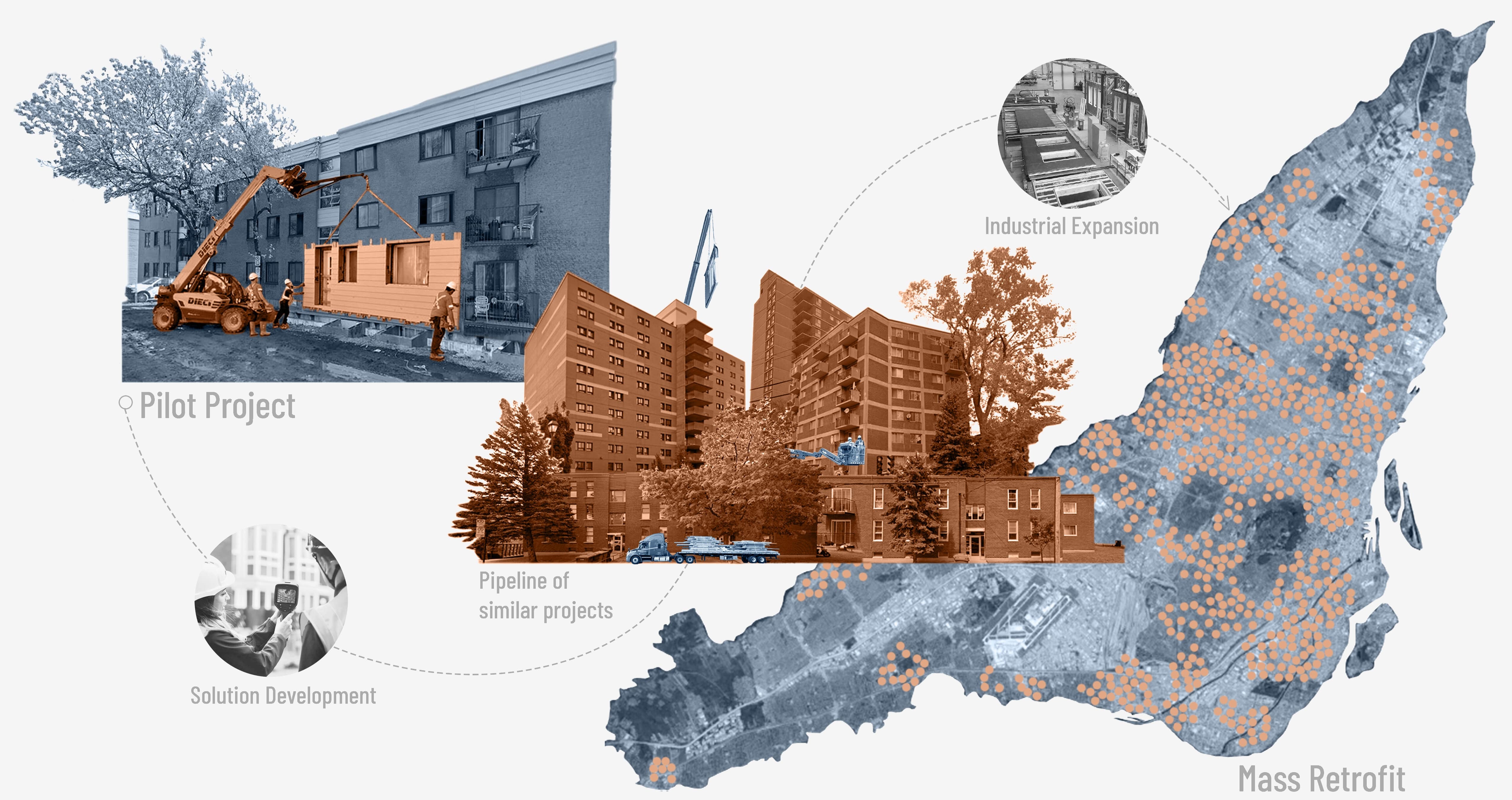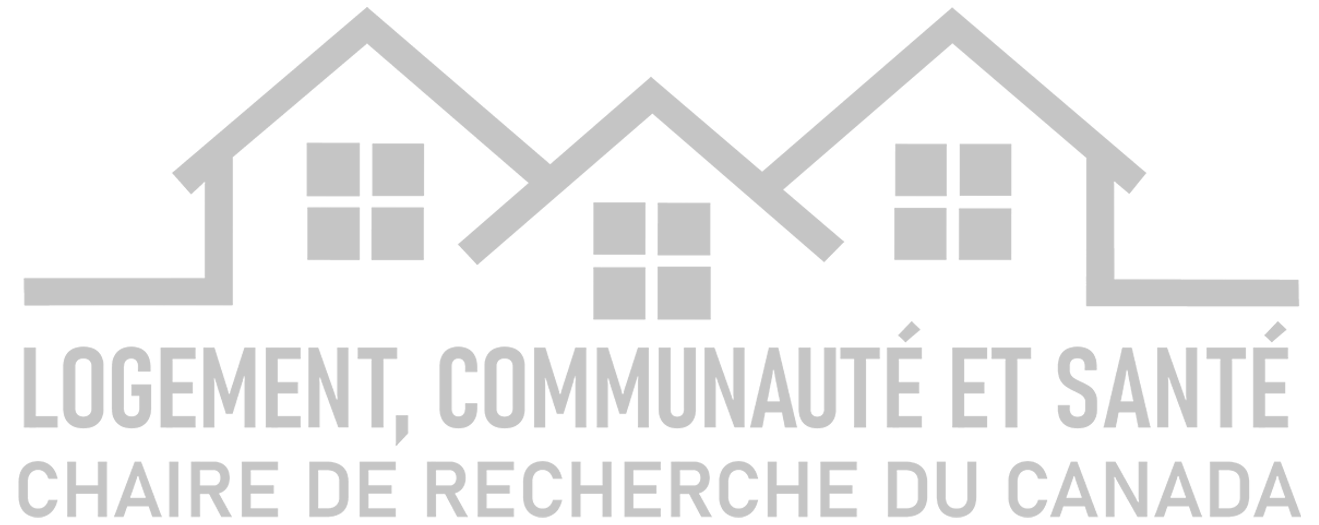The
Reconstruct
initiative

The transdisciplinary Reconstruct research initiative is a collaboration of academic researchers and research labs working with governmental, industry and community partners to develop and implement solutions for mass deployment of deep energy retrofits (DERs) for Quebec and Canada.
Motivation
Globally, buildings account for 40% of carbon emissions. In Canada, an estimated 80% of the buildings that will be standing in 2050 already exist.
It is widely acknowledged that DERs represent a viable and essential strategy to help Canada meet its greenhouse gas (GHG) emissions targets, and substantial funding is being allocated to accelerate their mass deployment. DERs are defined as retrofits that reduce a building's energy usage by 50 to 70%.
This video https://vimeo.com/564964835 provides a good explanation of the principles of the Energiesprong approach.
Our approach to DER
A fabric-first approach: applying high-performance, prefabricated panels to the exterior of buildings.
This over-cladding approach is critical to facilitating the mass deployment of low-carbon DERs. It results in a highly insulated and airtight building envelope, for which substantially smaller and more efficient active systems are installed to meet ventilation, heating, and cooling needs.
In collaboration with partners across Canada, we plan to accelerate mass deployment by streamlining the process for realizing low-carbon DERs and prompting industry to develop the necessary capacity.
We use a pilot-to-pipeline strategy to build the necessary technical and implementation capacity for DERs including manufacturing infrastructure, product supply, approval and procurement processes, and professional expertise.

Pilot to pipeline strategy
A Wholistic Value Proposition
DERs have many benefits beyond energy savings, which are commonly described as “non-energy benefits”. To achieve a measurable global impact, widespread adoption of DERs is needed, requiring significant investment. To make a case for such investment, a robust value proposition must be developed.
To develop a wholistic value proposition for mass DER, we are evaluating and quantifying their impacts and benefits through a transdisciplinary approach.
We are evaluating the impacts of DERs across four spheres:
Including an enhanced building stock and new economic sectors.
Including peak load reduction for the electricity grid, and improved ability to cope with climate extremes.
Resulting from improved thermal comfort and air quality in retrofitted buildings.
Including reduced operational GHG emissions and embodied carbon.
Our pilot projects
The Île-Bizard-Sainte-Geneviève Community Centre
Discover our pilot projectThe Île-Bizard Community Centre, which plays a crucial role as both a neighborhood hub and an emergency shelter, is the focus of a pilot project aimed at a holistic upgrade to its energy performance

Discover Our Collaborators








- Arrondissement de l’Île-Bizard—Sainte-Geneviève
- Société d’habitation du Québec
- Building decarbonization alliance
- Pembina institute
- Québec BVI – Bâtiment vert et intelligent
- ReCover Initiative
- Retrofit Canada
- The Atmospheric Fund (TAF)
- Transition Accelerator
- Zero Emissions Innovation Centre
- If Then Architecture Inc.
- Minotair Inc.
- RG Solutions
